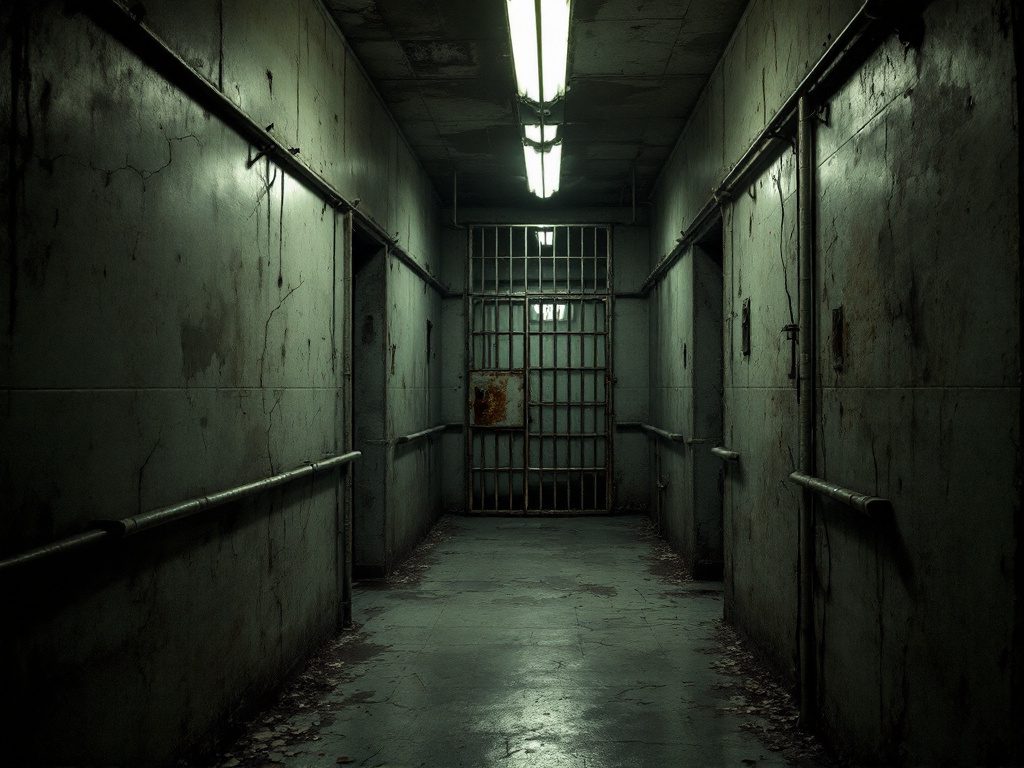Inside the Cell: A Fatal Night at Marcy Correctional
The brutality of prison life in America often remains hidden behind concrete, steel, and codes of silence. Every so often, a tragic death tears open this curtain, forcing us to confront just how thin the line can be between those who administer justice and those who abuse it. The December 2024 beating death of Robert Brooks—captured on body camera footage by his supposed guardians—has become a defining moment for accountability within New York’s prison system.
Christopher Walrath, a former correctional officer at Marcy Correctional Facility near Utica, became the first of ten officers indicted in connection with Brooks’ death to plead guilty. In a somber Oneida County courtroom, Walrath admitted not only to participating in Brooks’ beating—leaving his assigned post to do so—but also to covering it up, failing to report the violence he knew was perpetrated under color of authority. For Brooks, restrained and hopeless, this was the third beating inflicted within a single day—an unfathomable pattern of repeated assault.
Body camera video, crucially recorded without audio, proved vital. Correctional officers’ body cameras are designed to safeguard both staff and inmates—yet at Marcy, none had been actively turned on by their wearers, leaving investigators with 30 minutes of silent, chilling footage that still laid bare the systematic nature of the attack. The next day, Brooks was dead, his autopsy listing neck compression and blunt force trauma as causes. Seventeen corrections staff would ultimately be implicated—most for violating rules or participating in the attempted cover-up.
The Machinery of Impunity: Patterns and Consequences
These revelations open a disquieting window into a system that so often tolerates, or even incentivizes, violence. Walrath’s admission—that he not only took part in the beating, but left his post to do so—speaks to a culture where cruelty can become normalized. Prosecutors paint a picture of routine brutality: Brooks’ death followed two earlier beatings the same day, a mounting cascade of trauma and indifference.
Brooks’ family’s civil rights lawsuit asserts that excessive force—far from being an isolated incident—was something of a grim status quo at Marcy and across New York’s prison network. Similar allegations, stretching back decades, underscore just how doggedly resistant our institutions can be to reform. As the ACLU and watchdog groups have long argued, egregious abuse by corrections personnel is not merely the work of a few bad actors. Jennifer Gonnerman, a journalist whose reporting for The New Yorker has chronicled the Rikers Island crisis, describes a familiar rotation of violence, “where impunity is woven into the very fabric of daily life inside.”
Walrath’s plea agreement—which dropped second-degree murder charges down to first-degree manslaughter in exchange for testimony or cooperation—carries a sentence of 15 years plus five years supervised release. Brooks’ family approved the deal, acknowledging the grim trade-off between a certain, significant punishment and the inherent risks of a full trial that risked total acquittal. Still, many advocates are left asking: does this go far enough?
“When those responsible for upholding the law betray it so spectacularly, trust in public institutions erodes—not just for incarcerated individuals, but for every person who values justice over vengeance.”
Beyond One Prison: America’s Reckoning with Institutional Violence
A closer look reveals an uncomfortable truth: the Marcy beating is not an outlier, but part of a much wider pattern of institutional failures. According to a 2022 Vera Institute report, incarcerated people in New York are subjected to physical force in ways that vastly outstrip standards found in most developed nations. The specter of cover-ups—highlighted by the 17 staff named by the Department of Corrections for misconduct or silence—serves as a searing indictment of accountability mechanisms that simply do not work as intended.
Harvard legal scholar James Forman, Jr., in his acclaimed book “Locking Up Our Own,” underscores the systemic barriers to justice within corrections. “Prisons operate largely out of public view, creating an environment ripe for abuses that would never be tolerated elsewhere,” he writes. Reforms have too often been piecemeal or cosmetic, while high-profile prosecutions, important as they are, rarely force deeper change on their own.
The duty to fix these broken institutions rests not just on prosecutors and judges, but also on voters, policymakers, and local communities. Calls for independent monitoring, mandatory camera usage with real-time audio, and truly independent prosecutorial units echo from civil rights groups nationwide. The New York case demonstrates all too clearly what happens when the only witnesses are those with a stake in concealing the truth.
Public trust in the criminal justice system depends on knowing that those charged with guarding society’s most vulnerable are held to the highest standards. When even silent cameras reveal the kind of violence that ended Robert Brooks’ life, “just following orders” becomes an indictment—not a defense. Communities are left to reckon with not just the loss of one man, but with a system whose failures compound from cell block to courtroom, year after year.
Building Accountability: Where Do We Go Now?
Beyond this specific tragedy, the guilty plea in Brooks’ death must be seen as both a warning and a clarion call for comprehensive reform. Sustained oversight is critical. Mandating real and enforceable transparency—requiring functional body cameras, whistleblower protections for staff, and robust civilian oversight boards—can begin the long process of restoring confidence. The fact that Walrath and others are being brought to justice is not the end of the story, but rather the beginning of a wider reckoning.
Treating violence against incarcerated people as if it were somehow less serious not only violates progressive values of justice and equality, it diminishes our collective dignity. Are we willing to accept a legal system that punishes a beating after the fact, or should we demand one that prevents such atrocities altogether? The verdict is still out, and it’s up to all of us to ensure that justice—in its truest sense—prevails.

